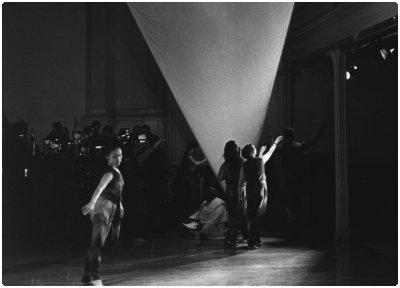MANDALA X illuminates the Vedic Hymn of Creation’s quest for ultimate cause. The immediacy of the sound vibrations and movement waves – the thirty-voice chorus, twenty-instrument orchestra, and nine dancers moving through DANSPACE’s compact performance space in a continuum with the surrounding audience – this immediacy is designed to draw the audience members physically and emotionally into the urgent search.
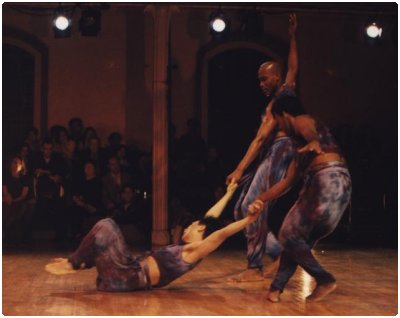
Sanskrit chanted by a venerable elder and sung in English translation by a very young boy soprano; traditional Indian dance hand gestures ”carried” by modern dance bodies; a chorus singing high in the balcony above, detached and witnessing the drama in the performance arena, while the witnessing audience flows into the breath of the dance movement – these are a few examples of sound and movement juxtapositions and transpositions. These choreographic and compositional techniques themselves are meant to suggest the interpenetration of time, space and mind, and the relationship between ancient Indian thought and modern scientific investigation.
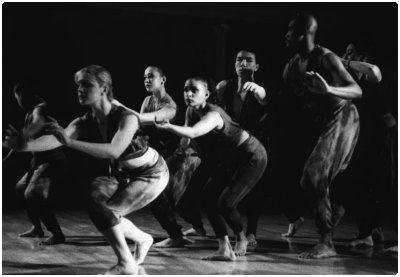
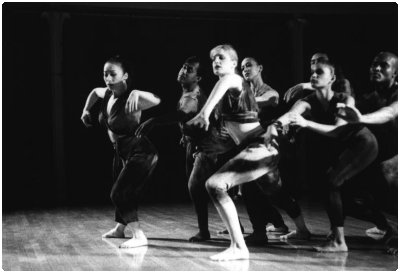
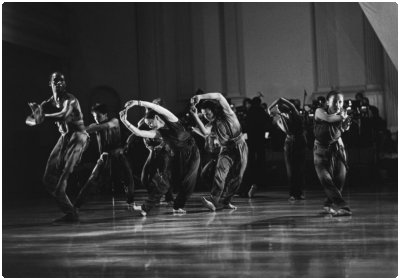
In the final moments of this dance oratorio, the dancers fade into the source of light and sound from which they had originally emanated, while the boy soprano innocently sings the ancient questions: ”Who really knows, who here will proclaim – from where was it created? From where this creation arose – whether it is upheld and sustained or not – Whoever looks down upon it from the highest heaven – indeed He knows – or perhaps He does not know.” Theoretical physicist Stephen W. Hawking concludes his book, A Brief History of Time, with a similar suggestion of the limits of human knowledge of ultimate cause: ”If we find the answer to that [why the universe exists], it would be the ultimate triumph of human reason – for then we would know the mind of God.”
